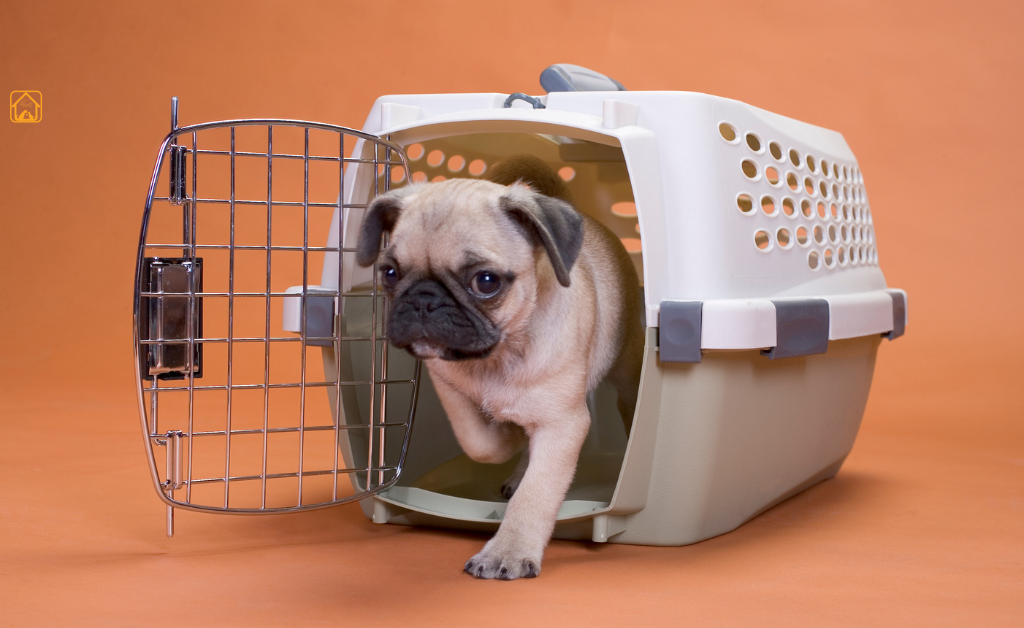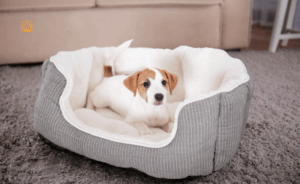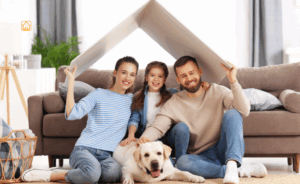When and Why to Use a Dog Crate
Dog crates are like a home base, a secure spot where your dog can feel safe and unwind. Most trainers and vets agree that crate training is valuable for nearly all dogs, from tiny puppies to seniors. I remember my own rescue pup Shiro, hiding in her crate during thunderstorms. It became her safe space, not a punishment. That’s the real magic.
- Puppy training: Dog crates help with house training, teaching puppies not to soil where they sleep.
- Preventing destructive behavior: Crates keep curious dogs from chewing shoes or getting into trouble when unsupervised.
- Safety during emergencies: In disasters or evacuations, a crate-trained dog is far easier to care for and transport.
- Rest after surgery: Vets often recommend crate rest for recovery, making prior training a huge help.
Types of Dog Crates: Materials, Styles & Best Uses
Walk through any pet store and you’ll see all kinds of dog crates like wire ones, plastic carriers, stylish wooden crates, even soft fabric ones. It can feel like too much, especially if you’re a first-time dog parent. Don’t worry, we’ll walk you through the different types, what they’re good for, and how to choose the right one for your dog and your daily life.
| Crate Type | Best For | Pros | Cons |
| Wire Crates | Most dogs, especially at home | Great airflow, easy to clean, collapsible for storage, adjustable size with dividers | Can be noisy, not escape-proof for determined chewers |
| Plastic Crates | Travel (cars, flights), anxious dogs | Cozy, more enclosed, airline approved (check specs), light to move | Less airflow, harder to clean corners, limited sizes |
| Soft-Sided Crates | Small dogs, calm travelers, temporary use | Lightweight, portable, easy to store | Not for chewers, less durable, harder to clean |
| Heavy-Duty/Impact Crates | Escape artists, strong or anxious dogs, car travel | Super sturdy, often crash tested, secure locks | Heavy, pricier, less portable |
| Furniture-Style/Luxury Crates | Blending into home decor, well-behaved dogs | Stylish, doubles as furniture, can be cozy | Expensive, not always as secure, may not suit destructive dogs |
Benefits of Dog Crates for Puppies, Adults, and Senior Dogs
Puppies: Building Good Habits Early
Crates set puppies up for potty training success and create a restful environment for their many daily naps. Puppies are less likely to develop anxiety if introduced gently to crates from day one.
Adult Dogs: Managing Energy and Behavior
Dog crates for adults can prevent destructive behavior and give your dog a place to retreat when life gets busy. Some dogs even choose their crate over a plush dog bed, go figure!
Seniors: Safe Rest and Recovery
Older dogs often crave a quiet spot to nap, especially if arthritis or health issues make them more anxious. A crate can become a familiar, restful haven as your dog ages.
Dog Crates for Travel, Cars, and Emergencies
Traveling with your dog? Whether you’re planning a road trip or just driving to the vet, dog crates for cars are the safest way to keep everyone protected. Crash tested dog crates and impact dog crates offer extra security, especially for large breeds. In emergencies, from natural disasters to medical evacuations, a crate-trained dog is easier to move and reassure.
- Car safety: Secures your dog, prevents distractions, and protects during sudden stops.
- Boarding & vet visits: Many facilities require crate-trained dogs for safety and comfort.
- Emergencies: Crates make evacuation less stressful for everyone involved.
How to Choose the Right Dog Crate: Size, Material, and Features
Finding the Perfect Fit
Choosing the best dog crate isn’t just about looks, it’s about safety and comfort. Always measure your dog, not just their breed! The right size crate lets your dog stand, turn around, and stretch out. For puppies, large dog crates with adjustable dividers grow with them.
| Dog Size | Recommended Crate Size |
| Small breeds | Small dog crates (up to 30 inches) |
| Medium breeds | Medium crates (30-36 inches) |
| Large breeds | Large dog crates (42 inches+) |
- Material: Wire crates are sturdy and well-ventilated; plastic ones are cozier for travel. Impact dog crates are ideal for high-energy or escape-artist dogs.
- Features: Look for easy-clean trays, double doors, and crash-tested dog crates for cars.
Don’t forget, if your crate is for home use, comfort and durability are your top priorities. For travel, focus on safety certifications and portability.
Dog Crate Styles: From Decorative Furniture to Crash-Tested Designs
Nice Dog Crates That Blend In
Say goodbye to those old, bulky metal crates that never matched your home. Today’s dog crates are designed to blend in beautifully. Many double as stylish furniture like end tables or accent pieces without losing function. The best-looking dog crates give your pup a safe, cozy spot while fitting right in with your decor.
Luxury and Impact Dog Crates
- Luxury dog crates: These often feature wood finishes, custom sizes, and plush bedding, perfect if you want your crate to complement your decor.
- Impact and crash-tested designs: Built tough for dogs with serious chewing or escape habits, and for safety in vehicles.
I once saw a handcrafted crate that matched a family’s farmhouse table. It was so nice, their guests didn’t even realize it was a dog crate until their Golden Retriever walked in.
Setting Up a Cozy and Stylish Dog Crate Space
Making a crate inviting is all about comfort and personal touch. Cozy dog crate setup ideas start with soft bedding, a favorite toy, and maybe a crate cover for privacy. Place the crate where your dog can see you, but away from noisy traffic. For a stylish look, try matching the crate cover or accessories to your decor.
- Add a washable crate mat or orthopedic bed.
- Use calming crate covers or blankets for den-like comfort.
- Keep water and safe chew toys inside for longer stays.
Must-Have Dog Crate Accessories for Comfort & Enrichment
- Crate pads or orthopedic beds for joint support.
- Chew-proof toys to keep your dog busy.
- Crate covers for privacy and coziness.
- Clip-on water bowls for travel or long naps.
- Calming scents (like lavender) for anxious pups.
Dog crate accessories for comfort make a huge difference, especially for long car rides or nervous dogs.
Common Dog Crate Mistakes and How to Avoid Them
- Leaving your dog in the crate too long. Crates are not a substitute for play, walks, or snuggles.
- Choosing the wrong size, too small is uncomfortable, too large can hinder potty training.
- Using the crate for punishment. Dogs should associate crates with safety, not fear.
- Ignoring signs of anxiety, heavy panting, drooling, or escape attempts mean you should slow down and retrain.
Honestly, I’ve seen so many well-meaning families turn the crate into a time-out zone. That never works. Crates are for comfort, not consequences.
FAQs About Dog Crates
How do I know what size dog crate my pet needs?
Measure your dog’s length (nose to tail) and height (floor to head). Choose a crate that allows your dog to stand, turn around, and lie down comfortably. For growing puppies, use a larger crate with a divider.
Are dog crates safe for long periods?
Crates are safe for short stints, like naps or overnight. Puppies and young dogs need more frequent breaks. Never leave a dog crated all day without bathroom, exercise, and enrichment breaks.
What’s the difference between impact dog crates and regular crates?
Impact dog crates are built tougher, often from reinforced materials. They’re ideal for escape-prone or strong dogs, and for travel when you need extra security, like crash-tested dog crates for cars.
Can dog crates really be stylish?
Absolutely! Stylish dog crates for home include designs that look like furniture, with finishes to match your decor. Decorative dog crate furniture is both functional and beautiful.
What’s the best way to introduce my dog to a crate?
Go slow. Place treats and favorite toys inside. Let your dog explore with the door open, then close it for short periods as they get comfortable. Use positive reinforcement, never force or punish.
Do senior dogs still need crates?
Senior dogs benefit from having a familiar, cushioned spot to rest and recover. Crates can help after surgery or during illness, and offer a peaceful retreat in busy homes.
What crate accessories improve comfort and safety?
Look for orthopedic pads, crate covers, clip-on bowls, and safe toys. For travel, use crash-tested crates and secure them in your vehicle. Accessories make a big difference in how relaxed your dog feels.
Conclusion
Choosing the right dog crate isn’t just about where your dog sleeps, it’s about building comfort, safety, and trust. From travel-friendly soft crates to elegant furniture-style designs, there’s something for every dog and home. The key is finding what works best for your space and your pup’s personality. Happy crate shopping!



